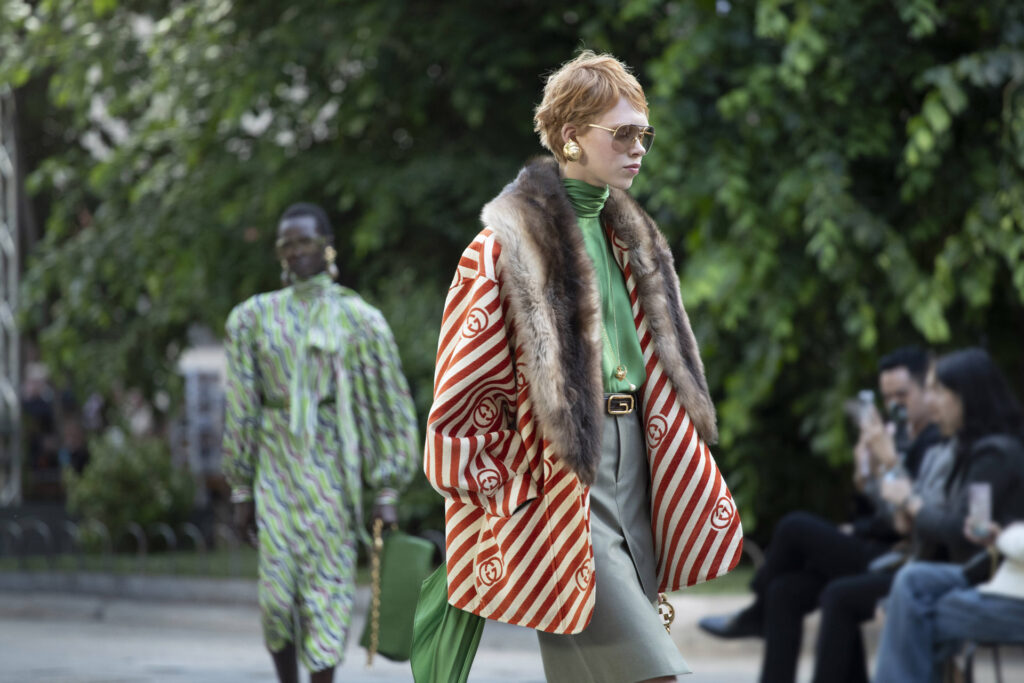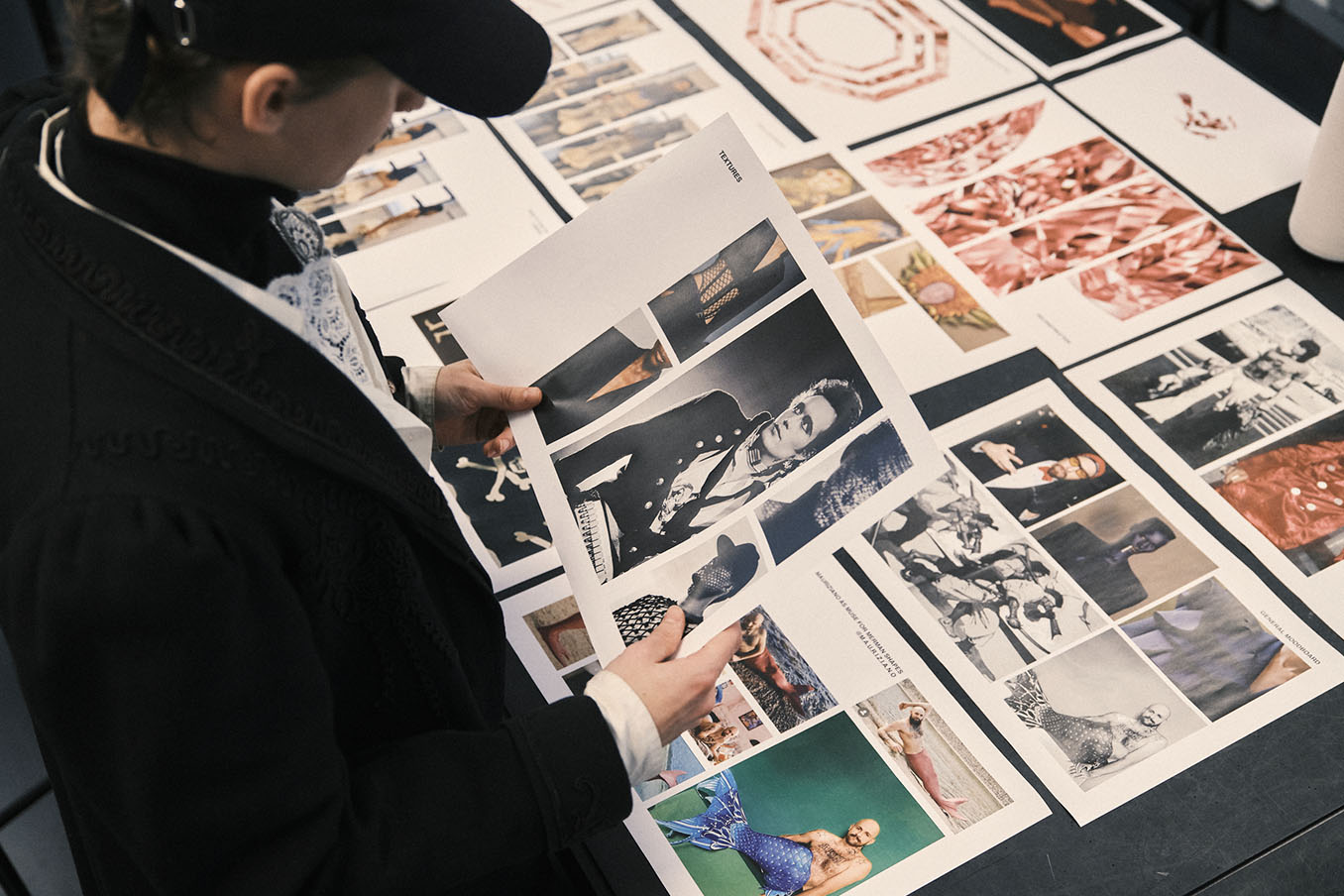Santo Spirito is more than a historical landmark; it’s part of Gucci’s rich heritage and cherished by many who call it their home. Palazzo Settimanni, located on Via delle Caldaie, holds an important place in Gucci’s history and fittingly, served as the epicenter of the show. Undergraduate in Fashion Art Direction student Mobina Mirzaei attended with fellow students.

From streets flooded with vintage finds featured in social media “fit checks” to red carpets adorned with archival pieces, fashion’s reverence for the past has never been more vivid. In an era where luxury houses produce up to six collections a year, archival fashion offers a rare moment of stillness, a reflective pause that holds up a mirror to where we’ve been. Our attachment to nostalgia may stem from the comfort it brings, a sense of grounding in an ever-accelerating world. But in fashion, looking back isn’t about reliving the past, it’s about using it to shape the essence of what comes next. It’s a celebration of what was once left behind or overlooked. And the beauty of being overlooked is the opportunity to be rediscovered, revived with intention, and reintroduced in the most remarkable way, when the time is right.
This Cruise 2026 collection drew inspiration from almost every chapter of Gucci’s story: Tom Ford’s sultry minimalism, Alessandro Michele’s eclecticism, and more. Somehow, it all came together; referencing the 70s, 80s, 90s, the collection resonated across generations, truly touching everyone. The past and future merged seamlessly: the GG monogram, chunky coats, pencil skirts, pointy pumps, and oversized aviator glasses left the audience spellbound.
Gucci, across all its creative directors and eras, has always contained an easy-going yet bold characteristic; a distinctive nonchalant style, effortless effort, “an art which does not seem to be art”, known in Italian as sprezzatura, coined by Baldassare Castiglione in his guide titled The book of the Courtier. The ability to make it look like you haven’t put thought into it, but somehow it all comes together like a perfect symphony. This is the point where self-confidence arises, where every detail is intentional, yet nothing feels contrived.
Models began their walk from Gucci’s archive at Palazzo Settimanni, flowing into Santo Spirito square. Some wandered into the restaurants, pausing at doorways. It was a performance that revealed how maximalism can be both bold and effortlessly refined.
Beyond the stunning silhouettes Gucci presented, the show left a tangible positive impact, revitalizing the square with re-painted walls and a freshly cleaned fountain. The event’s harmony captivated even casual passersby, many of whom waited in long lines outside the church for a chance to glimpse the magic.
The collection also marked the debut of the new Giglio bag, an ode to Florence and to the giglio – the Italian word for lily and the stylized emblem that has long symbolized the city. Additionally, Monili, Gucci’s new high jewelry line created in collaboration with Pomellato; they presented archival Pomellato designs from 1984 featuring bold pieces in gold, leather, and diamonds that celebrate the craftsmanship and future of both houses.
This was the final parade before Gucci welcomes its newly appointed creative director, Demna Gvasalia. The collection raises an intriguing question: what can this heritage revival tell us about the future direction of the house?
Ultimately, this collection is about celebrating this heritage. As the brand declares, “Gucci is Florence, and Florence is Gucci”, all that’s left to be seen is what that will mean under the boundary-pushing Georgian designer.

